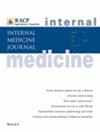Is the incidence and burden of cancer increasing among young individuals? An age-related analysis based on Global Burden of Disease Study and Surveillance, Epidemiology and End Results
Abstract
Background
Cancer incidence patterns are shifting globally. The overall age profile and secular trends in cancer onset remain inadequately understood, and their impact on the global cancer burden unquantified.
Aims
This study aimed to analyse long-term trends of cancer onset age and assess their impact on cancer burden.
Methods
Using data from GBD 2019 and SEER, trends in onset age of 29 cancer types were analysed in the United States and globally over three decades. Early-onset cancers were defined as cases below the 1990 median age; late-onset cancers exceeded this threshold. Mean and median onset age were analysed globally (Socio-Demographic Index (SDI) stratified). Temporal trends were quantified using average annual percentage change. Age changes related to population structures were evaluated by fixing cancer incidence in 1990. Changes in cancer burden by age were evaluated using disability-adjusted life years for younger and older age groups.
Results
In the United States, most cancers showed increasing onset ages. Globally, prostate cancer had a decreasing mean age, while nasopharynx, uterine and prostate cancers displayed declining median ages. The global cancer burden significantly increased for the older age group, surpassing the increase in the younger age group. A similar pattern was observed across SDI, except for low SDI. Notably, early-onset cancers exhibited a trend towards earlier onset in low SDI regions, while the burden remained greater in high SDI areas.
Conclusions
Most cancer types showed an increasing onset age in the United States and globally. Despite population aging, certain cancers had a younger onset age. Policymakers and healthcare systems should be aware of these trends and take appropriate action. The young generation should also stay vigilant about cancers with a younger onset age.

 求助内容:
求助内容: 应助结果提醒方式:
应助结果提醒方式:


